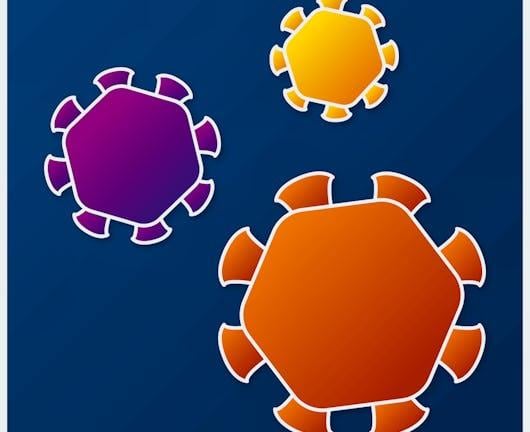MOOC List is learner-supported. When you buy through links on our site, we may earn an affiliate commission.

MOOC List is learner-supported. When you buy through links on our site, we may earn an affiliate commission.
On successful completion of the course, learners will be able to:
1. Recognise unifying principles but diversity of virus structure and function
2. Illustrate how we can detect, identify and track viruses in individuals and populations
3. Recognise the importance of traditional and molecular genetics to understanding viruses
This is an intermediate series of courses intended for both clinical and non-clinical scientists who want to update their skills for work in clinical, academic, and pharmaceutical/bioscience industries, and is developed and delivered by experts working on viruses and novel vaccines.
To be successful in this series of courses, you should have basic knowledge in biology, genetics, microbiology or related fields.
This course is part of the Foundations in Virology and Vaccinology Specialization.
What you'll learn
- Recognise how viruses cause infection
- Recognise how vaccines prevent infections
Syllabus
Module 1 - What are viruses?
The names of some viruses are instantly recognisable. The impact on an individual, a family, a community, and beyond, can be devastating. Disease, serious illness, and even death. Others have not been in the spotlight so much in recent years but have been incredible threats to humans and humanity. However, most recent COVID-19 pandemic, has shone a spotlight again on viruses and the fragility of our defences against, existing threats that are constantly mutating, adapting and evolving let alone against newly emerging threats. This week we look at the question: What are viruses?
Module 2 - How do viruses replicate (and spread)?
How do viruses replicate and spread? If we want to understand the fundamental characteristics of viruses, so that we can find ways to tackle them, we need to know how viruses replicate and spread. In this module, we are going to look at virus replication and spread and introduce some terms around these concepts.
Module 3 - How do we propagate, observe and measure viruses?
To be able to study viruses, we need to be able to isolate and then produce viruses using a process from horticulture called propagation. We can then use cells cultivated in mass quantities using laboratory techniques and pass the isolated virus cells through the cultivated cells to study the effects of the virus in a process called passaging. In this module, we will look at the development of propagation and passaging techniques – how these have evolved over time, and how they have impacted the development and production of vaccines.
Module 4 - How do viruses evolve?
There was a lot in the media about variants and mutations during the COVID-19 pandemic. We had variants named after where they were first recognised. Then they were given Greek letter identifiers, such as delta and omicron. How important is it to have an understanding of how viruses evolve, and which types of viruses are likely to evolve much quicker than others? What is the impact of mutations on antiviral drug effectiveness? And overall, how are viruses, and the diseases they cause, shaped by mutation, selection and evolution? This week, we will look at virus mutation, their types and consequences, and the evolution of novel viruses through reassortment, recombination, and adaptation.
Module 5 - How do we use ‘reverse genetics’ & ‘chimaeric viruses’ in research, gene therapy & vaccine development?
Conventional virus genetics talks about the range of genotypes, range of phenotypes, stability and quasispecies. Traditional genetic analysis often involves associating observable phenotypes with genotypes, then mapping the mutations causing those genotypes. Mapping normally involves looking at the genetic linkage between known and unknown genetic markers. In this module, we will look at viral genetics - the approaches used in conventional virus genetics, and the limitations of conventional virus genetics.
MOOC List is learner-supported. When you buy through links on our site, we may earn an affiliate commission.
MOOC List is learner-supported. When you buy through links on our site, we may earn an affiliate commission.
